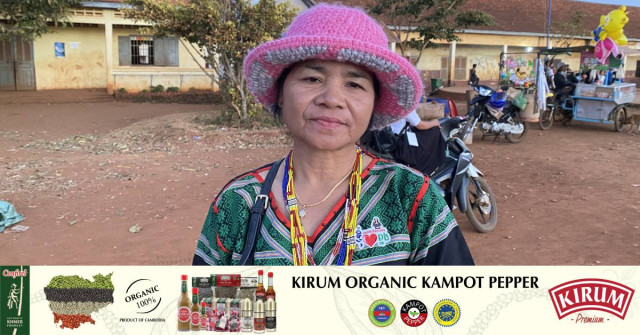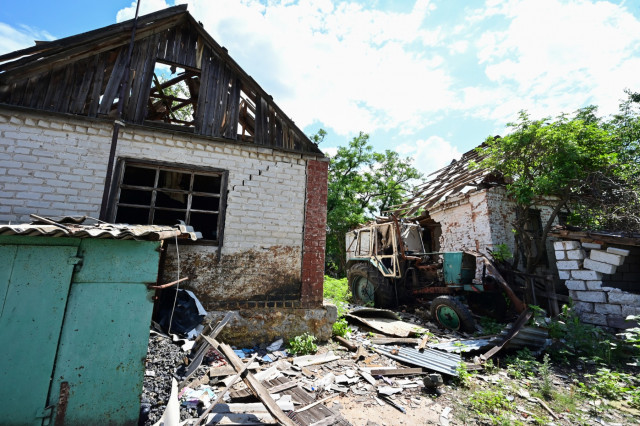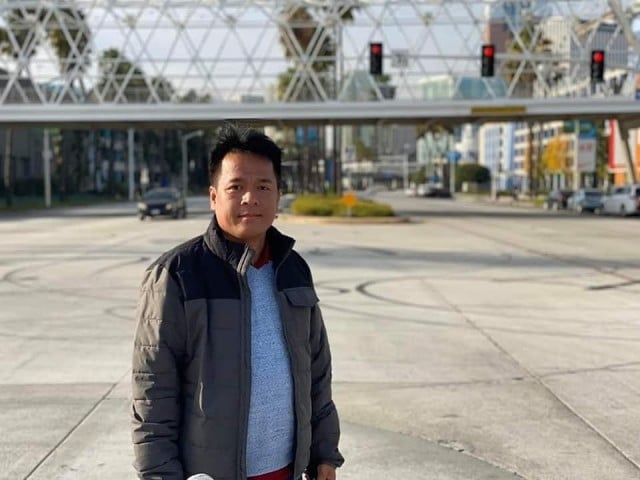Australia to Return Looted Cham Antiquities to Cambodia
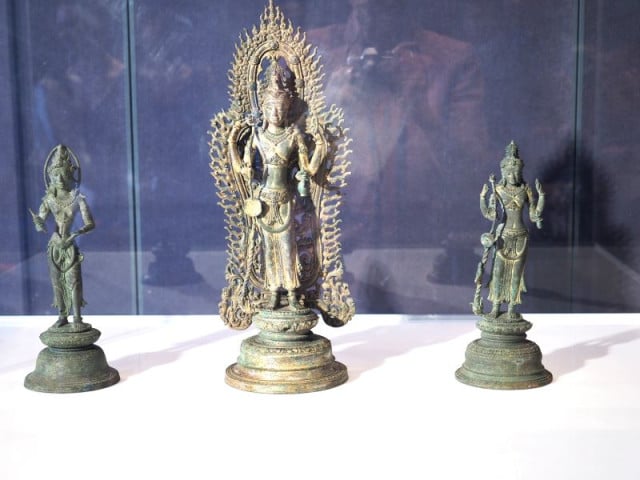
- By Sao Phal Niseiy
- August 3, 2023 11:53 AM
CANBERRA—Centuries-old sculptures of Buddhist deities will be returned to Cambodia by Australia for the first time, following two years of investigation.
The items include three bronze statues--Bodhisattva Avalokiteshvara Padmapani, Bodhisattva Vajrapani and Bodhisattva Avalokiteshvara Padmapani--that are part of the artistic legacy of the Kingdom of Champa and were sculpted between the 9th and the 10th centuries.
The repatriation ceremony for the antiquities took place on July 28 at the National Gallery of Australia in Canberra.
Undersecretary of State of the Ministry of Culture and Fine Arts Kong Vireak said that these sculptures were originally from the Roka Po Pram Commune’s Preah Ang Village in Tboung Khum District in Tboung Khmum Province, where a large Cham community lives in Cambodia.
“We could say the collection belongs to the Khmer but is designed with the art of the Cham,” he said.
Vireak explained that Australia had agreed to return the three Cham artworks after the Cambodian side had provided sufficient evidence and information regarding the origins of the sculptures following investigation.
“To claim these stolen artifacts, it took us almost two years to investigate and collect information,” he noted, adding that his team and the research team from Edenbridge Asia travelled to the site where these work were looted to investigate.
“Fortunately, the looters volunteered to participate in the information collection process,” Vireak said. “They helped provide us with so much information regarding the origins of these items…we gave them nicknames [in the report] to protect their identity and to keep them safe as they were willing to help us.”
When asked about the artifacts' provenance, Bronwyn Campbell, the National Gallery of Australia's senior curator, confirmed that the works were bought in 2011 from the late dealer Douglas Latchford. “Over the last decade, we realised that many of the works of art Latchford sold to museums and private collectors around the world were stolen,” she said.
“So, we, of course, wanted to investigate the works of art [we had bought from him].
“We started by researching with all experts we could find in the field and talking to ministries in all countries where the Cham culture extends to, such as Cambodia and Vietnam,” Campbell said. “We were lucky enough to meet the Edenbridge Asia team and be put in touch with them so that we started working specifically on information they were getting from the network of looters. That finally brought us the information we needed to discover their true origin.”
During the same event, Cambodian Ambassador to Australia Cheunboran Chanborey thanked the Australian government for volunteering to repatriate the stolen artifacts to their home country.

“We are witnessing a historic occasion as three Cambodian cultural properties have officially found their home country,” he said. “This is an important step towards rectifying past injustices, reinforcing the value of cultural properties, and acknowledging the importance of preserving and protecting cultural heritage.” Chanborey pointed out that the two sides are working together to identify other stolen Cambodian cultural artifacts currently in Australia so they can to be repatriated as the next step.
According to Chanborey, Cambodia and Australia enjoy close people-to-people relations and cultural and religious exchanges.
“This cooperation should be a role model for international cooperation, which aims to promote the appreciation for national cultural heritage,” he explained. “Such recognition will be vital to encourage stronger protection and preservation of national heritage.”
Australian Special Envoy for the Arts Susan Templeman concurred that Australia's repatriation of Cham antiquities to Cambodia is a testament to the friendship and closed collaboration between the two countries.
“As the special envoy for arts of the prime minister, I feel very proud that we take seriously the history of our artifacts: It is a real show of the friendship, the respect, and the ability to work together between Australia and Cambodia that we can work through this process, ”Templeman said.
Returning the lost country’s soul to help Cambodians heal
The return of the looted artifacts has enormous meaning for Cambodia, the more so that the country greatly suffered during decades-long civil conflicts in the past, Vireak said during the repatriation ceremony.
“Therefore, the repatriation is not just meaningful in terms of cultural-artifact management work but for the whole of Cambodia and the people affected by war as this could help them heal,” he stressed. “They may feel that peace and security now return while the souls of our ancestors as well as deities, separated from one another by war, now might reunite.”
In March 2023, Prime Minister Hun Sen stressed the importance of returning stolen Khmer artifacts to Cambodia as he called on looters to consider the return of those items as an act of good faith to help people recover from the trauma of decades of civil conflicts in the country.
Australian Special Envoy for the Arts Susan Templeman agreed that the power of healing from artifacts being returned to countries where they had come from is crucial in many aspects.
“Last year, I was in Leipzig in Germany for a return of our ancestral remains to traditional aboriginal owners, and I could see the emotional response from people,” she said. “It is very powerful when it is about human remains. Still, it is also powerful when it is about objects with a special connection, whether that is a sacred connection or historical connection to people.
“It is crucial to do, and it helps us reconcile,” Templeman said.
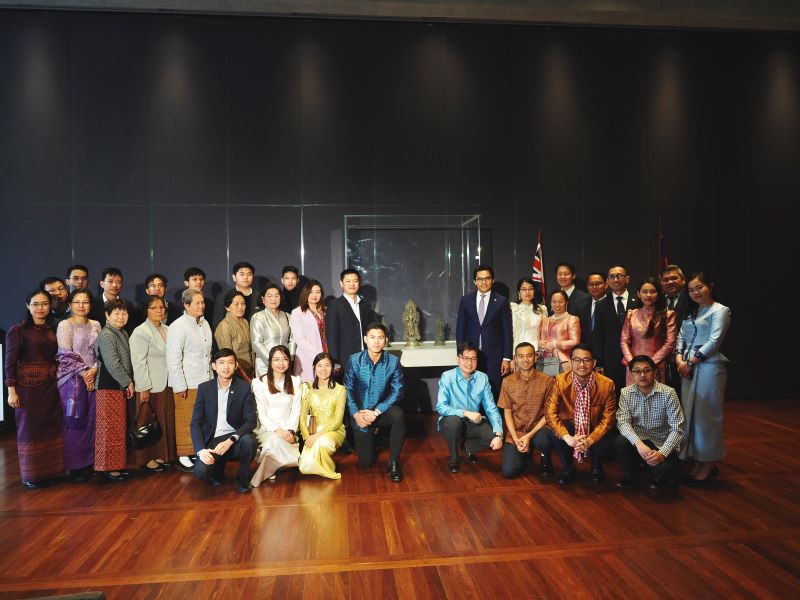
Cambodia grants Australia a three-year loan of the artifacts
The stolen artifacts will not be repatriated immediately as Australia received the right to retain them and put them on public display for another three years, Ambassador Chanborey said. “I’m even more pleased that the three artifacts continue to be displayed here for the next three years.
“The display and care of the sculptures at the National Gallery and their eventual repatriation highlight the power of international cooperation and, more importantly, signify a strong Cambodia-Australia cultural link, which is a cornerstone of our bilateral ties,” he said.
Bronwyn Campbell, the National Gallery of Australia's senior curator, said that Australia was very fortunate to be granted such a loan. “Initially, our idea would be returning the sculpture immediately as we recognise that these never belong to us,” she said. “However, we are fortunate because the Ministry of Fine Arts asked if we would like to retain them for a three-year loan…That is a generous offer."
Special Envoy Templeman also thanked the Cambodian government for the three-year loan agreement for the artifacts. He added that this will enable Australia to illustrate at the museum the history and stories of these people for Australians and people from Cambodia who are living in Australia.
*The story has been modified to correct the period when the statues were sculpted.






